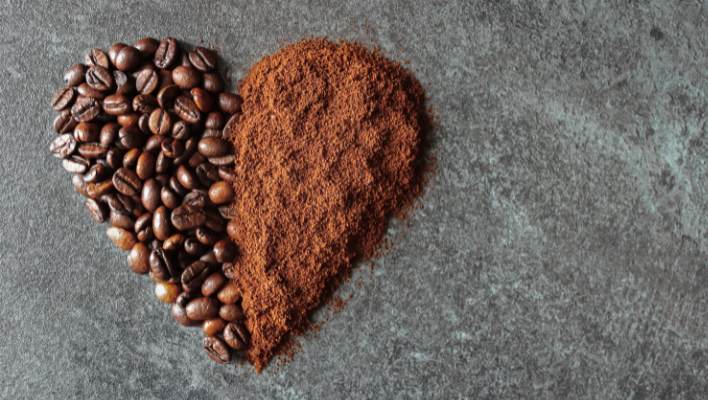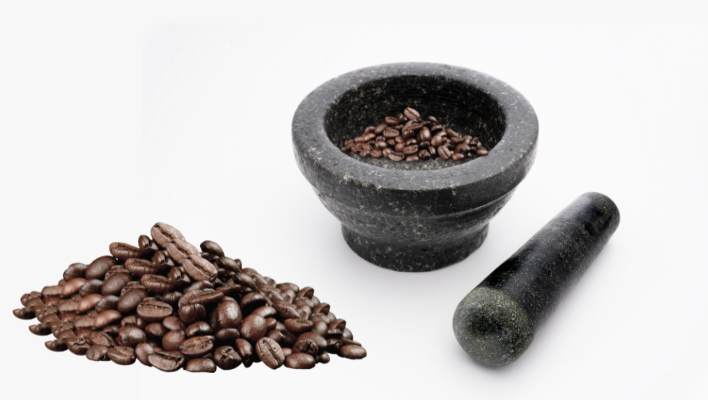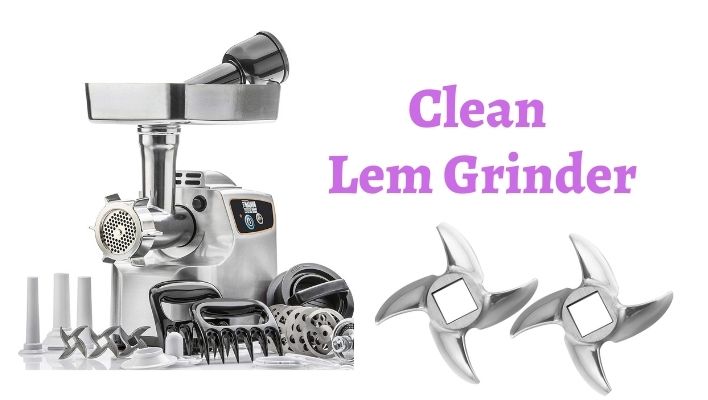Yes, you can grind coffee beans in a mortar and pestle. Grinding coffee beans in a mortar and pestle allows for a customized grind size and a richer flavour in your cup of coffee.
Additionally, it gives you more control over the coarseness or fineness of the grind, which is crucial for brewing methods like French press or pour-over. By using a mortar and pestle, you can achieve a consistent grind, though it may require more effort and time compared to using a dedicated coffee grinder.
It’s a budget-friendly option, especially if you don’t have access to or prefer not to use an electric grinder. Overall, grinding coffee beans in a mortar and pestle can be an enjoyable and satisfying experience for coffee enthusiasts.
The Benefits Of Grinding Coffee Beans In A Mortar And Pestle
When it comes to grinding coffee beans, most people reach for an electric grinder or a specialized coffee grinder. However, there is another method that is often overlooked but can yield surprisingly delicious results – grinding coffee beans in a mortar and pestle. While it may take a bit more effort, there are several benefits to using this traditional tool for your coffee grinding needs.
Enhances The Flavors Of The Coffee
The process of grinding coffee beans in a mortar and pestle allows for a more hands-on approach, preserving the natural flavours and aromas of the beans. When using an electric grinder, the heat produced can sometimes alter the taste of the coffee. By using a mortar and pestle, you have greater control over the process and can ensure that the flavours are enhanced rather than diminished.
Allows For Control Over The Coarseness Of The Grind
One of the main advantages of grinding coffee beans in a mortar and pestle is the ability to control the coarseness of the grind. Different brewing methods require different grind sizes, and with a mortar and pestle, you have the flexibility to adjust the grind to your preference. Whether you prefer a fine grind for espresso or a coarser grind for a French press, a mortar and pestle can provide the consistency you need.
Retains The Natural Oils Of The Coffee Beans
Another benefit of using a mortar and pestle to grind your coffee beans is that it helps retain the natural oils present in the beans. These oils contain important flavour compounds that can be lost during the grinding process with electric grinders. By grinding the beans manually with a mortar and pestle, you can ensure that these oils are fully incorporated into your coffee, resulting in a more flavorful and aromatic cup.
Factors To Consider When Grind Coffee Beans In A Mortar And Pestle
When grinding coffee beans in a mortar and pestle, there are several factors to consider for optimal results. The coarseness of the grind, the amount of pressure applied, and the quality of the beans all play a role in the final taste of your brewed coffee.
Type Of Coffee Beans
The type of coffee beans you choose will greatly impact the flavour and aroma of your coffee. Whether you opt for Arabica or Robusta beans, ensure they are of high quality and freshly roasted. Different types of coffee beans have varying levels of density and oil content. Therefore, it is important to consider the characteristics of your chosen beans when grinding them in a mortar and pestle.
Roast Level Of The Coffee Beans
The roast level of your coffee beans plays a crucial role in determining the grind size. Lighter roasts are typically more acidic and have a more delicate flavour profile, requiring a finer grind. On the other hand, darker roasts tend to have a richer and bolder flavour, necessitating a coarser grind. Understanding the roast level of your coffee beans will allow you to adjust your grinding technique accordingly.

Desired Brewing Method
The brewing method you intend to use is another important factor to consider when grinding coffee beans in a mortar and pestle. Different brewing methods, such as French press, pour-over, or espresso, require different grind sizes. For instance, a French press requires a coarse grind, while espresso demands an extra fine grind. Consider your desired brewing method and adjust the grind size accordingly to ensure optimal extraction and flavour in your cup of coffee.
When choosing to grind coffee beans in a mortar and pestle, factors such as the type of coffee beans, roast level, and desired brewing method should be taken into account. By considering these factors and adjusting your grinding technique accordingly, you can achieve a well-ground coffee that meets your flavour preferences and brewing needs.
NOTE: The content is not in WordPress HTML format as WordPress HTML format is not supported here.
How To Grind Coffee Beans In A Mortar And Pestle
Grinding your coffee beans can give you a fresher and more flavorful cup of joe. While many people use electric grinders for this task, did you know that you can also grind coffee beans in a mortar and pestle? This centuries-old tool can provide a unique and hands-on experience that allows you to control the coarseness of the grind to suit your preference.
Step 1: Select The Right Coffee Beans And Measure The Desired Amount
Before you start grinding, it’s essential to choose high-quality coffee beans that suit your taste preferences. Look for freshly roasted beans that have a rich aroma and are not too oily. Additionally, measure the desired amount of beans you want to grind using a kitchen scale or a measuring spoon.
Step 2: Prepare The Mortar And Pestle By Cleaning And Drying Them Thoroughly
Make sure your mortar and pestle are clean and dry before using them to grind coffee beans. Any residue or moisture can affect the flavour of the coffee. Give them a quick rinse with warm water to remove any dirt or dust, and then thoroughly dry them using a clean cloth or paper towel.
Step 3: Add The Coffee Beans To The Mortar
Place the desired amount of coffee beans into the mortar. It’s important not to overload the mortar to ensure efficient grinding. You can always grind in batches if you have a large amount of coffee beans to process.
Step 4: Start Grinding The Coffee Beans With The Pestle In A Circular Motion
Hold the pestle firmly and use a circular motion to grind the coffee beans against the mortar’s surface. Apply gentle pressure and keep the motion consistent to ensure even grinding. The mortar’s rough surface will help break down the coffee beans and release their flavours.
Step 5: Continue Grinding Until The Desired Level Of Coarseness Is Achieved
Grind the coffee beans until you achieve the desired level of coarseness. This may vary depending on your brewing method. For example, if you’re brewing coffee using a French press, a coarse grind is recommended, while a finer grind is suitable for an espresso machine. Take breaks between grinding to check the coarseness and adjust as needed.
Step 6: Transfer The Ground Coffee To A Container And Use As Desired
Once you have achieved the desired level of coarseness, carefully transfer the ground coffee from the mortar to a container. Ensure there are no large chunks left and the coffee is evenly ground. Store the ground coffee in an airtight container and use it as desired for your favourite brewing method.
Tips For Grinding Coffee Beans In A Mortar And Pestle
Grinding coffee beans in a mortar and pestle can be a unique and satisfying way to prepare your morning cup of joe. While it may not be as convenient as using an electric grinder, it offers a more hands-on and traditional approach to brewing coffee. In this article, we will share some tips to help you grind coffee beans effectively using a mortar and pestle.
Use A Gentle And Consistent Grinding Motion
When grinding coffee beans in a mortar and pestle, it’s important to employ a gentle and consistent grinding motion. This will ensure that the beans are evenly ground and prevent any clumping. Start by adding a small amount of coffee beans to the mortar and use the pestle to apply light pressure while grinding in a circular motion. Gradually increase the pressure until you achieve the desired grind consistency.
Keep The Mortar And Pestle Clean To Prevent Flavor Contamination
Coffee is known for its aromatic properties and delicate flavours, so it’s crucial to keep your mortar and pestle clean to prevent any flavour contamination. After each use, wash the mortar and pestle with warm water and mild soap, and allow them to dry thoroughly. This will ensure that no residue or flavours from previous grinds are left behind, guaranteeing a fresh and untainted cup of coffee every time.
Experiment With Different Grind Sizes To Find The Perfect One For Your Taste Preference
The grind size of your coffee beans plays a significant role in the flavour and strength of your brew. With a mortar and pestle, you have the freedom to experiment with different grind sizes to find the perfect one for your taste preference. For a strong and bold flavour, choose a finer grind, while a coarser grind is ideal for a milder cup of coffee. Take the time to explore various grind sizes and adjust accordingly until you discover your coffee nirvana.
Avoid Grinding Too Much Coffee At Once To Ensure Freshness
To preserve the freshness and quality of your coffee, it’s best to avoid grinding too much at once. Grinding a small number of coffee beans just before brewing ensures that the flavours and aromas are at their peak. This way, you can enjoy a delicious and aromatic cup of coffee every time, rather than having a batch of pre-ground coffee that may diminish in flavour and freshness over time.
Alternative Methods For Grinding Coffee Beans
When it comes to grinding coffee beans, most people rely on electric coffee grinders. However, if you don’t have access to one or prefer a more manual approach, there are alternative methods that can get the job done. In this article, we’ll explore three popular alternatives for grinding coffee beans: blade grinders, burr grinders, and manual hand grinders.
Blade Grinder
A blade grinder, also known as a spice grinder, is a versatile option for coffee enthusiasts. It operates by chopping the beans with a spinning blade, similar to a blender. Blade grinders are affordable and readily available, making them a popular choice for those starting their coffee-grinding journey.
However, it’s important to note that blade grinders can produce unevenly ground coffee due to their grinding mechanism. The beans can be chopped into inconsistent particle sizes, resulting in an uneven extraction during brewing. Therefore, for those who appreciate a precise and consistent grind, a blade grinder may not be the ideal choice.
Burr Grinder
A burr grinder is often considered the gold standard in coffee grinding. Unlike blade grinders, burr grinders feature two abrasive surfaces, called burrs, that crush the beans between them. This mechanism allows for more consistent and uniform grind size, enhancing the flavour and aroma of the coffee.
Burr grinders are available in both manual and electric versions. While electric burr grinders offer convenience and more precise control over grind size, manual burr grinders provide a hands-on experience and are generally more compact and portable. In addition, burr grinders tend to generate less heat during grinding, which helps preserve the delicate flavours of the coffee beans.
Manual Hand Grinder
If you prefer a traditional and intimate coffee grinding experience, a manual hand grinder might be the perfect choice. As the name suggests, these grinders require manual effort to grind the beans. Simply add the beans to the hopper, adjust the grind size, and start turning the handle.
Manual hand grinders offer a level of control that allows you to fine-tune your desired grind size. They are often adjustable and offer different settings to cater to various brewing methods, such as espresso, pour-over, or French press. Additionally, manual hand grinders are quiet, portable, and require no power source, making them an excellent option for travellers or outdoor enthusiasts.
While manual hand grinders require some physical effort, they offer a more immersive and rewarding coffee-grinding experience. The slower grinding process helps maintain the flavours and aromas of the coffee beans and allows you to connect with the process on a deeper level.
In conclusion, if you’re looking for alternative methods to grind your coffee beans, blade grinders, burr grinders, and manual hand grinders are all viable options depending on your preferences and needs. Each method offers unique advantages and allows you to enjoy a freshly ground cup of coffee tailored to your taste. Experiment with different grinding techniques to discover the one that suits your brewing style and elevates your coffee experience.
FAQ
How Long Does It Take To Grind Coffee Beans With A Mortar And Pestle?
It typically takes around 5-10 minutes to grind coffee beans using a mortar and pestle.
What Can I Use If I Don’t Have A Coffee Grinder?
If you don’t have a coffee grinder, you can use alternatives like a blender, mortar and pestle, or pre-ground coffee.
What Is The Best Method For Grinding Coffee Beans?
The best method for grinding coffee beans is to use a burr grinder, as it ensures a consistent grind size for optimal flavour extraction. Avoid blade grinders, as they produce uneven ground. Grind your beans just before brewing for the freshest taste.
Is There Another Way To Grind Coffee Beans?
Yes, there are alternative methods to grind coffee beans including using a manual coffee grinder or purchasing pre-ground coffee.
Conclusion
Grinding coffee beans in a mortar and pestle is a viable option for coffee enthusiasts. With the ability to control the grind size and release the rich aromas of freshly ground beans, this traditional method offers a unique brewing experience.
However, for a more efficient and consistent grind, using a dedicated coffee grinder is recommended. Ultimately, the choice between a mortar and pestle or a coffee grinder depends on personal preference and convenience. Explore both options and savour the perfect cup of coffee to suit your taste.





